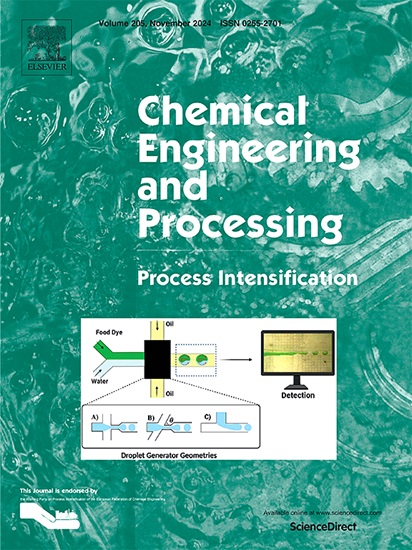Multi-parameter co-optimization of SNCR denitration system in a large MSW incinerator
IF 3.8
3区 工程技术
Q3 ENERGY & FUELS
Chemical Engineering and Processing - Process Intensification
Pub Date : 2025-07-18
DOI:10.1016/j.cep.2025.110458
引用次数: 0
Abstract
The combustion of waste in incinerators generates toxic substances such as nitrogen oxides, which pose risks to both the environment and human health. Therefore, it is essential to control NOx emissions from incinerators. The in-furnace Selective Non-Catalytic Reduction (SNCR) system reduces NOx to nitrogen and water by injecting reducing agents (such as ammonia or urea). The operational parameters of the injection nozzles can significantly influence the denitrification efficiency, including factors such as the droplet size, injection velocity, spray angle, and injection angle of the reducing agent, which plays critical roles in the SNCR process. This study focused on a large-scale waste incinerator with a daily treatment capacity of 700 t/d, and the effects of different injection velocities, spray angles, injection angles, and droplet size distributions on denitrification efficiency were numerically investigated by coupling Fluent and FLIC software. Finally, a better operational results were obtained through Variable-controlling approach. The results indicated that when the injection velocity of the reducing agent increased from 40m/s to 60m/s, the denitrification efficiency at the furnace outlet was improved from 28.63 % to 36.73 %. When the droplet size increased from 100 μm to 300 μm, the denitrification efficiency rised from 36.73 % to 65.57 %. A relatively higher denitrification efficiency of 75.06 % was obtained when the spray angle is 20° and the injection angle is 10°

大型生活垃圾焚烧炉SNCR脱硝系统多参数协同优化
垃圾在焚化炉中燃烧会产生氮氧化物等有毒物质,对环境和人类健康构成威胁。因此,控制焚化炉的氮氧化物排放至关重要。炉内选择性非催化还原(SNCR)系统通过注入还原剂(如氨或尿素)将NOx还原为氮和水。喷注喷嘴的操作参数对脱氮效率有显著影响,包括液滴大小、喷注速度、喷注角度、还原剂喷注角度等因素,在SNCR工艺中起着至关重要的作用。以日处理量为700 t/d的大型垃圾焚烧炉为研究对象,通过Fluent和FLIC软件耦合,数值研究了不同喷射速度、喷射角度、喷射角度和雾滴粒径分布对脱硝效率的影响。最后,通过变量控制方法获得了较好的运行效果。结果表明:当还原剂注入速度由40m/s提高到60m/s时,炉口脱硝效率由28.63%提高到36.73%;当粒径由100 μm增大到300 μm时,脱氮效率由36.73%提高到65.57%。当喷淋角为20°,喷淋角为10°时,脱氮效率为75.06%
本文章由计算机程序翻译,如有差异,请以英文原文为准。
求助全文
约1分钟内获得全文
求助全文
来源期刊
CiteScore
7.80
自引率
9.30%
发文量
408
审稿时长
49 days
期刊介绍:
Chemical Engineering and Processing: Process Intensification is intended for practicing researchers in industry and academia, working in the field of Process Engineering and related to the subject of Process Intensification.Articles published in the Journal demonstrate how novel discoveries, developments and theories in the field of Process Engineering and in particular Process Intensification may be used for analysis and design of innovative equipment and processing methods with substantially improved sustainability, efficiency and environmental performance.

 求助内容:
求助内容: 应助结果提醒方式:
应助结果提醒方式:


